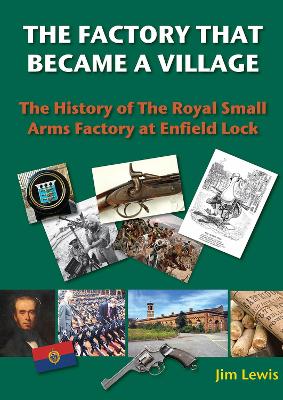Lea Valley
3 total works
London’s Lea Valley – Home of Britain’s Growing Food and Drink Industry and a Little Bit More
by Jim Lewis
The post-war years saw a massive decline in the Lea Valley’s industrial base. This was particularly marked by the collapse in furniture, electronics and electrical manufacturing that had been affected by cheap imports from countries abroad who had developed and streamlined their industries during the war years. Also affecting the collapse was a reluctance by some British manufacturers to invest and update their businesses in the light of the increasing overseas competition.
However, in recent years the Lea Valley has seen a marked increase in the manufacture, development and distribution of food and drink products within the region. This upsurge has, in a way, complemented the work of earlier food and drink producers, several of whom have increased their product range and are now not only supplying and sustaining the British consumer markets, but also a number of markets overseas.
This book not only uncovers the Lea Valley’s emerging food and drink industry, but also highlights the history of those regional establishments that provided sustenance for earlier generations.
While it is not possible to cover every food retailer, manufacturer, wholesaler and microbrewery within the Lea Valley region, it is hoped that those establishments mentioned in this book will give the reader a “flavour” of how the valley’s food and drink industries are evolving and changing. In fact, it would seem that before this book has reached the printer, another micro-brewery has popped up or a new food wholesaler, manufacturer and distributor has emerged.
charity responsible for the concept and the running of Enfield Island Village,
in January 2015, it was to discuss the commissioning of a book that would tell
the story of the former government controlled Royal Small Arms Factory (RSAF)
after privatisation and closure in 1987. However, during discussions it soon
became clear, with the impending two-hundredth anniversary of the birth of the
Enfield Lock armoury, that a unique opportunity existed to link the story of
the RSAF site with the founding of the RSA Trust. And as one Trust director put
it, this is the classic story of "from swords into ploughshares". Surprising as
it may seem, the story of the birth of the Enfield Lock armoury in 1816 and the
methods of manufacture that then existed within the British small arms industry
has never been completely told.
At the time of writing this
book the author wanted, in the two-hundredth anniversary year of the founding
of the RSAF, to commemorate the contribution made to our armed forces by the
former workforce which, by their skills and dedication, helped keep Britain
safe during times of world instability. Also I wanted to acknowledge the
contribution made to our community by the four founding fathers of the RSA
Trust that has benefited so many worthwhile good causes.
In a world full of
increasingly depressing news it is uplifting to have the opportunity to write
about a group of four local businessmen who had the vision, courage and
tenacity to take on the mammoth task of rescuing a Grade II listed building
that no sane entrepreneur would have contemplated taking on and turn it into a
vibrant sustainable business for the benefit of the local community. The model
created pays a service charge into a limited liability company, RSA IV, which
in turn transfers the surplus to the not-for-profit RSA Trust which is then
able to fund many community good causes.


